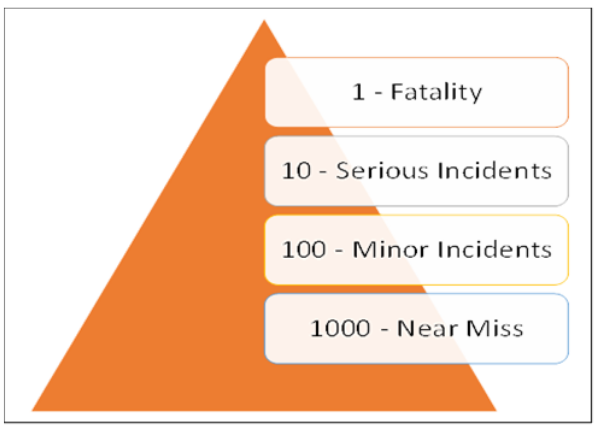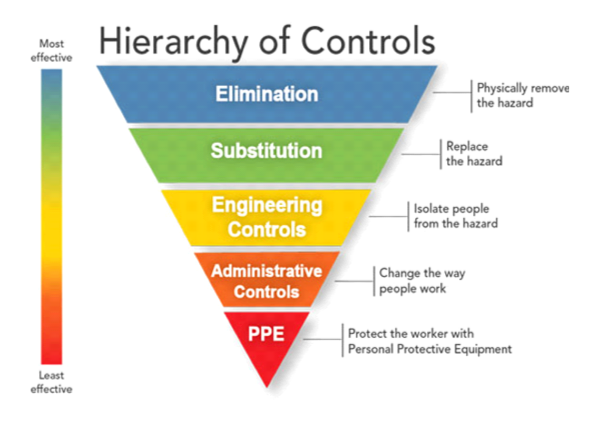Most accidents are blamed on the employee’s behavior. There are cases where this is true, but usually, this is not the case. Causes of accidents run much deeper than employee behavior.
Every 1,000 near misses in the workplace is a practice for a minor incident. Every 100 minor incidents in the workplace is a practice for the serious incident. Every 10 serious incidents result ultimately in one fatality. Every time we let a near miss go, without an investigation and correction, we are practicing for the fatalities. Businesses need to address incidents at a preventive measure.
Theories of the Cause of Accidents
Multiple Cause Theory uncovers root causes because accidents are not assumed to be simple events. They are the result of a series of random related or unrelated acts/events that somehow interact to cause the accident. This is a systems approach, which take into account the dynamics of systems that interact within the overall safety program.
The Domino Theory says that injury results from a series of related occurrences which lead to a final event, resulting in injury or illness. Also referred to as a chain of related events. It’s assumed that by eliminating any one action or event, the chain will be broken.
Single Event Theory is to blame the victim. It’s simple right, Jim on one occasion reached into the machine without a tool. It’s convenient to blame the victim and all responsibility goes to him. Blaming is a short-term fix, but in the long run blaming is expensive to implement and maintain.
Incident/Accident Steps to Investigation
-
- Get everyone safe
- Preserve and document scene
- Collect information
- Determine root causes
- Implement corrective actions
Information Analysis
After gathering all the information, conduct a structured analysis to determine the unique events that occurred. Accurately determine the sequence of events and start by separating (breaking down) the incident into its component parts. This is looking at pre-incident, during incident and post incident parts so that hazardous conditions, unsafe behaviors, and system weaknesses can be identified.
Sample Accident
EMS responds to an accident at your facility. Mike was injured on August 1, 2020 in the power press shop area of the facility. The accident occurred on a mechanical power press and Mike lost three fingers when he reached into the press to extract a part. The press is operated by a foot pedal and it was not guarded. The plexi-glass point of operation guard was left flipped up. Mike was removing a tool stuck in the die and he hit the unguarded foot pedal. Mike yelled for help and employees came running to his aid. A supervisor arrived followed shortly by EMS first responders. There was no emergency response team trained at the facility, but there was a first aid kit.
Example Sequence of Events
-
- Employee was hired and received orientation one week ago
- Maintenance removes a guard to work on press
- Maintenance does not have the needed part and is called away for another broken machine
- Maintenance fails to secure guard or post a “Do Not Use” sign
- Tool jams in press
- Employee fails to lock out the press before clearing the jam
- Employee bypasses unsecured guard
- Employee reaches into press without a hand tool
- Employee steps on unguarded foot pedal activating press
- Press dies closes on employee’s hand amputating three fingers (the injury incident)
- Supervisor and 911 are called
- Supervisor shows up with first aid kit
- 911 medics provide treatment at scene
- 911 medics transport employee to hospital
Causes of Accidents
Look below the Direct Cause of the amputation injury. We must look at the Indirect Causes (behaviors and conditions) that led to the injury. Conditions would include unguarded machine, broken tools or equipment, defective PPE or an untrained worker. Behaviors would include ignoring a hazard, failure to enforce or inspect, failure to train. The Basic Root Cause of accidents pre-exist indirect and includes; inadequate training, no discipline or procedures, no orientation process, inadequate training, no inspections that recognize hazards, no labeling or signage to warn employees.
Injury Analysis
-
- Injury Analysis – amputation of three fingers caused by caught in, dies of press.
- Indirect Cause Analysis – hazardous conditions, foot pedal unguarded, and unsafe employee/manager/maintenance behaviors, employee bypasses unsecured guard, employee failed to lockout tagout, employee reaching unguarded die without hand tool and maintenance failed to secure guard
- Basic Root or Systems Analysis – press operator not trained, maintenance man had too much work and was in hurry, press operated working too fast, supervisor too busy, supervisor not conducting safety inspections of area and failed to train press operator.
OSHA’s View on Controlling Hazards
Employers must control hazards in the workplace and keep employees safe from harm. The intention of the OSHA standards is that they are minimum requirements. If a specific rule cannot be sited, the General Duty Clause says, “employment and a place of employment which are free from recognized hazards that are causing or are likely to cause death or serious physical harm to his employees…”





